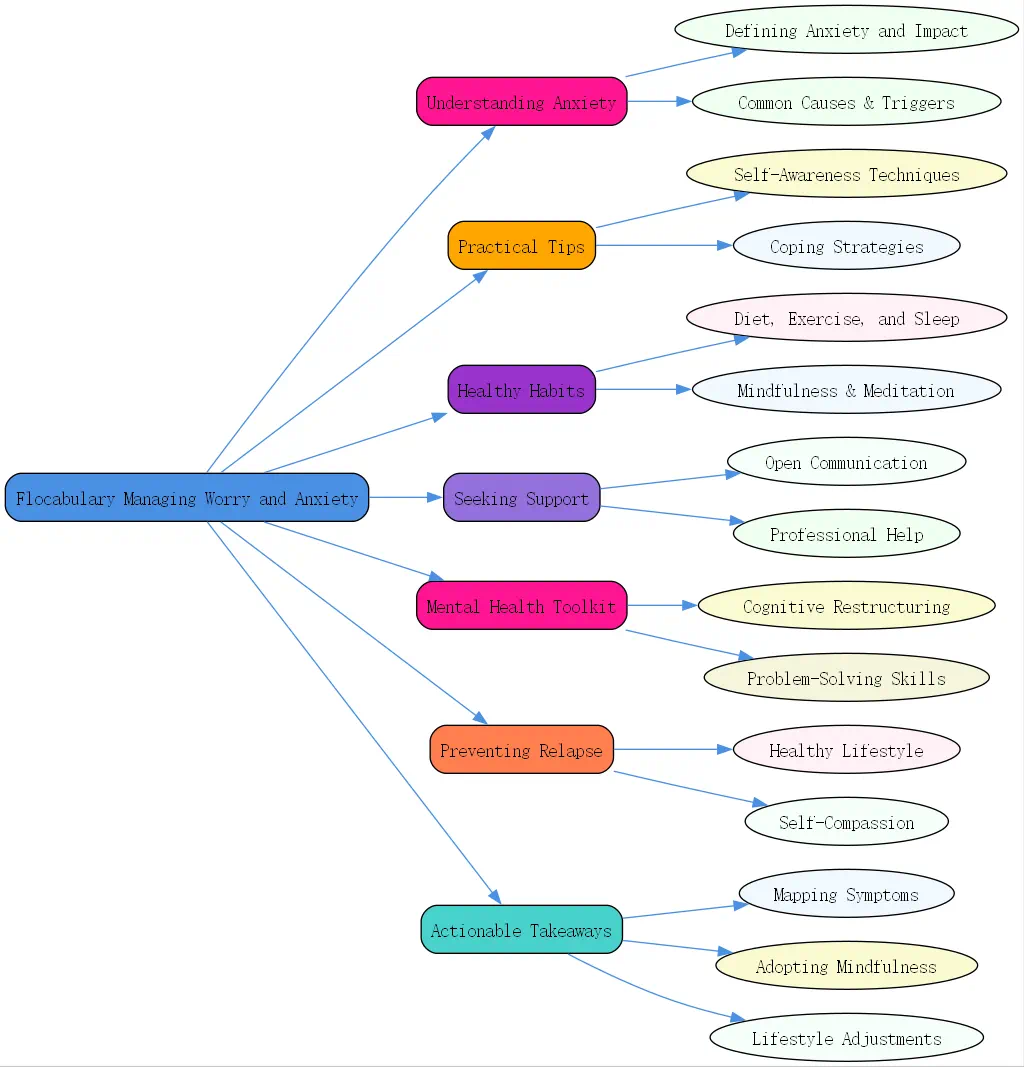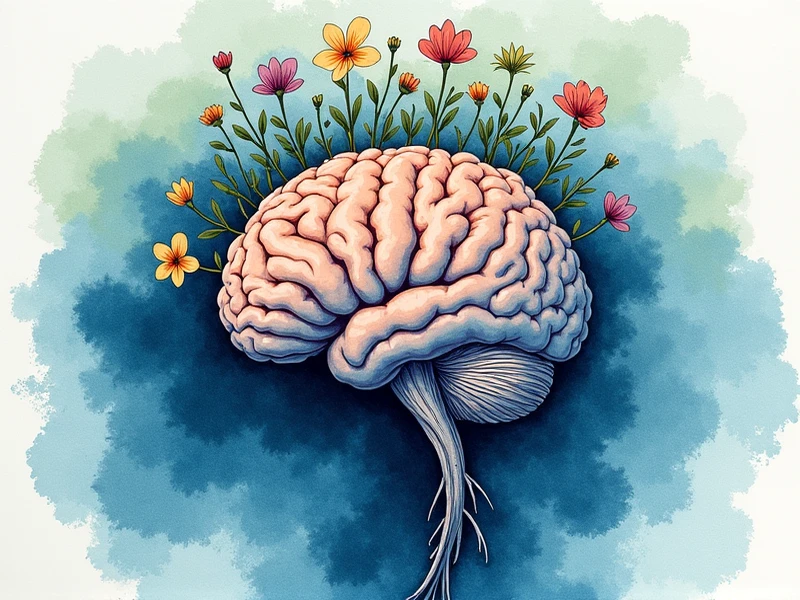In today’s fast-paced world, managing worry and anxiety is more crucial than ever. As mental health challenges become increasingly common, finding actionable solutions is key to living a balanced and fulfilling life. BrainTalking, a trusted name in psychology, delves into the insights offered by Charles H. Elliott and Laura L. Smith in their seminal work Anxiety and Depression Workbook For Dummies. This comprehensive guide presents practical strategies, lifestyle tips, and professional guidance to help individuals take control of their mental health journey.
Understanding Anxiety and Worry

Defining Anxiety and Its Impact
Anxiety is more than just occasional nervousness. It’s a persistent state that can heavily impact emotional, mental, and physical health. Charles H. Elliott and Laura L. Smith emphasize the importance of understanding anxiety’s nature and symptoms. This foundational knowledge helps people differentiate normal worry from anxiety disorders, providing a path to break free from overwhelming stress and reclaim their lives naturally.
Common Causes and Triggers

Anxiety often stems from deep-rooted triggers such as past experiences, ongoing stressors, or genetic predispositions. Elliott and Smith encourage individuals to map out their specific triggers, behaviors, and responses, creating a personalized mental roadmap. This exercise increases self-awareness, enabling people to tackle their anxiety head-on.
Differentiating Normal Worry From Anxiety Disorders
Everyone worries occasionally, but chronic anxiety affects the body and mind on a deeper level. Understanding the symptoms and signs of anxiety disorders allows individuals to identify when their fears become debilitating. This differentiation is critical for adopting strategies to manage fear and anxiety effectively.
Practical Tips to Manage Anxiety and Stress
Self-Awareness Techniques
Elliott and Smith highlight self-awareness as the cornerstone of mental health management. Taking time to reflect on emotions and thought patterns helps individuals recognize the situations that exacerbate their anxiety. By consciously identifying triggers, people develop the ability to address challenges with resilience and calm.
Coping Strategies for Immediate Relief
Managing anxiety isn’t just about long-term strategies; addressing immediate symptoms is equally necessary. Deep breathing exercises, progressive muscle relaxation, and visualization techniques provide quick relief during moments of heightened stress. These methods interrupt the body’s stress response and foster a sense of calm, helping to mitigate the intensity of anxious episodes.
Long-Term Anxiety Management Strategies
The authors emphasize cognitive restructuring for sustainable relief from anxiety. This approach involves identifying negative thought patterns and replacing them with positive, healthier perspectives. Over time, this strategy reduces the frequency and severity of anxious episodes, allowing individuals to approach stressors with greater confidence.
Healthy Habits for Managing Depression and Anxiety Naturally
The Importance of Diet, Exercise, and Sleep
Lifestyle changes often play a pivotal role in improving mental health. BrainTalking outlines the importance of a balanced diet, daily physical activity, and adequate sleep as essential tools for naturally managing depression and anxiety. Exercise releases endorphins, the body’s 鈥渇eel-good??hormones, while a nutritious diet fuels the brain for optimal function. Ensuring ample sleep helps regulate emotions and restore the mind’s balance.
Mindfulness and Meditation Practices
Mindfulness is an extraordinary tool for managing worry and anxiety. Elliott and Smith argue that being fully present in each moment enables individuals to detach from overwhelming thoughts and view emotions as temporary experiences. Meditation, too, promotes calmness and self-awareness, making it a powerful addition to anyone’s toolkit for managing depression and anxiety naturally.
Building Resilience and a Positive Outlook
Resilience鈥攖he ability to bounce back from challenges鈥攊s a game-changer for managing mental health. By fostering a positive outlook, practicing gratitude, and developing problem-solving skills, individuals become better equipped to face fears, manage depression and anxiety naturally, and thrive in the face of adversity.
Effective Communication and Seeking Support
Expressing Feelings and Needs Openly
Mental health struggles often lead to feelings of isolation. BrainTalking emphasizes the importance of effective communication, encouraging individuals to express their emotions and needs openly. Talking with trusted friends, family, or therapists allows feelings of worry to be validated, ultimately reducing their impact.
The Role of Social Support and Connection
Strong social connections are a vital defense against anxiety. Elliott and Smith highlight the significance of nurturing relationships that foster empathy, understanding, and encouragement. Surrounding yourself with supportive individuals helps build a network that bolsters mental resilience during tough times.
Knowing When to Seek Professional Help
Seeking professional guidance is not a sign of weakness鈥攊t’s an act of self-care. Therapists, counselors, or psychological experts like those at BrainTalking provide invaluable support, offering evidence-based treatments such as cognitive behavioral therapy and, when needed, medication. Knowing when to seek professional help ensures that anxiety and depression don’t spiral unchecked.
Building a Mental Health Toolkit
Cognitive Restructuring Techniques
Challenging negative thoughts is a cornerstone of mental health recovery. Cognitive restructuring encourages individuals to identify self-destructive thought patterns and replace them with constructive perspectives. Over time, this practice fosters healthier responses to everyday stressors and empowers people to take control of their mental health.
Relaxation and Visualization Exercises
Tools such as progressive muscle relaxation and guided imagery have proven effective for managing fear and anxiety. These exercises help quiet the mind and recalibrate the body’s stress response, offering relief during episodes of heightened worry.
Developing Problem-Solving Skills

Problem-solving skills contribute significantly to mental health management. Elliott and Smith encourage individuals to approach challenges systematically, breaking them into manageable steps. This proactive method reduces overwhelm and builds confidence in tackling emotional or practical struggles.
Preventing Anxiety and Depression Relapse
Maintaining a Healthy Lifestyle
Establishing a lifestyle rooted in balance is key to warding off anxiety and depression. BrainTalking stresses the importance of regular physical activity, nutritious meals, adequate rest, and mindfulness practices in creating a foundation for mental well-being.
Practicing Self-Compassion and Kindness
Self-compassion is a powerful yet often overlooked tool. Treating yourself with kindness, patience, and understanding fosters resilience and prevents self-criticism. Elliott and Smith remind readers that it’s okay to experience challenges鈥攖hey’re part of the human journey.
Regular Mental Health Checkups and Prevention Strategies
Proactive mental health checkups ensure that individuals catch early warning signs of anxiety or depression. Combined with prevention techniques like stress reduction and relaxation practices, these strategies pave the way for long-term mental health stability.
Actionable Takeaways
- Mapping Symptoms: Create a mental map to identify triggers and patterns.
- Adopting Mindfulness: Practice meditation and self-awareness daily to manage worry effectively.
- Lifestyle Adjustments: Incorporate exercise, a balanced diet, and regular sleep into your routine.
- Building Resilience: Focus on problem-solving skills and maintaining a positive outlook.
- Seeking Guidance: Don’t hesitate to talk to loved ones or mental health professionals.
Q&A Section

Q: How can cognitive restructuring help in managing anxiety and stress effectively?
A: Cognitive restructuring is a technique that helps individuals challenge and replace negative thought patterns with constructive ones. By identifying self-defeating beliefs, reframing them into positive perspectives, and addressing stressors logically, this method promotes healthier mental responses. For example, instead of thinking, 鈥淚 can’t handle this challenge,??cognitive restructuring encourages a belief like, 鈥淭his situation is a chance for growth, and I’ll approach it step by step.??Over time, this practice reduces anxiety, improves problem-solving skills, and cultivates resilience.
BrainTalking believes that managing worry and anxiety is not just about symptom reduction鈥攊t’s about empowerment, awareness, and growth. By incorporating expert insights and adopting these techniques, individuals can build resilience and live a healthier, happier life. Flocabulary managing worry and anxiety becomes more than a phrase鈥攊t’s a pathway to wellness and personal empowerment.




